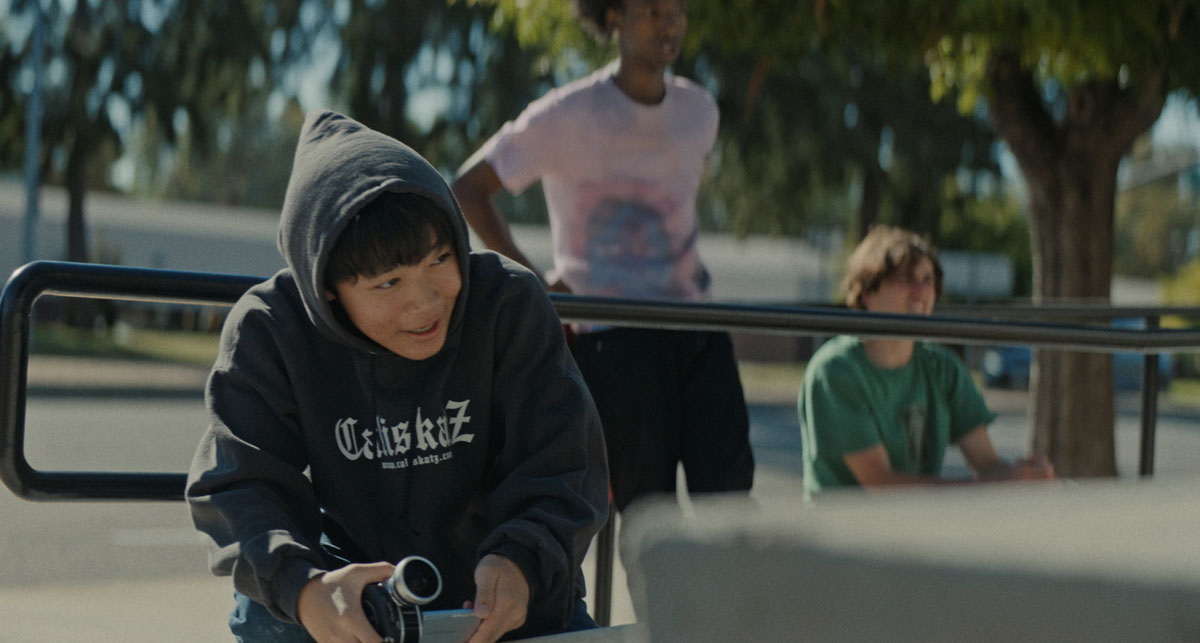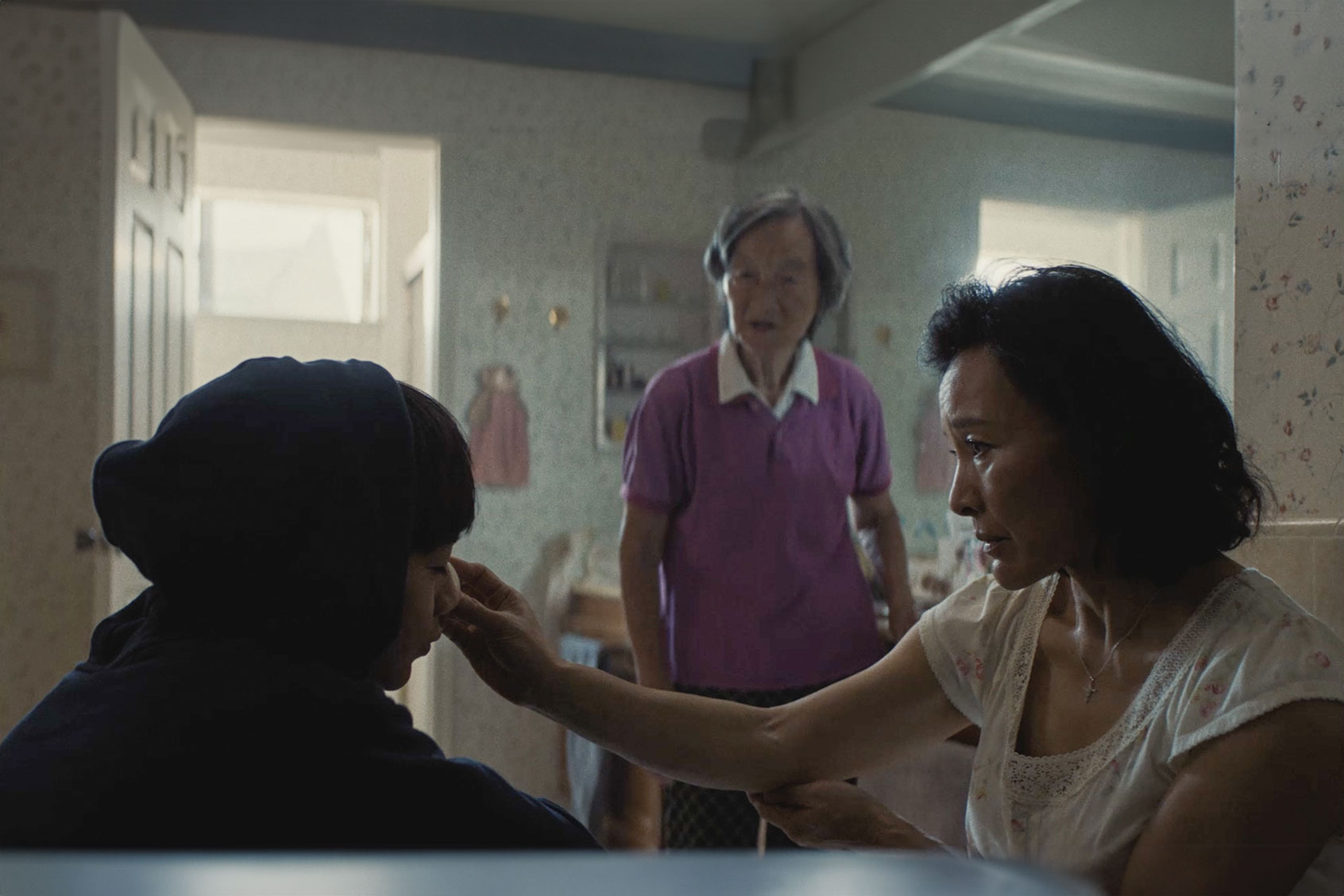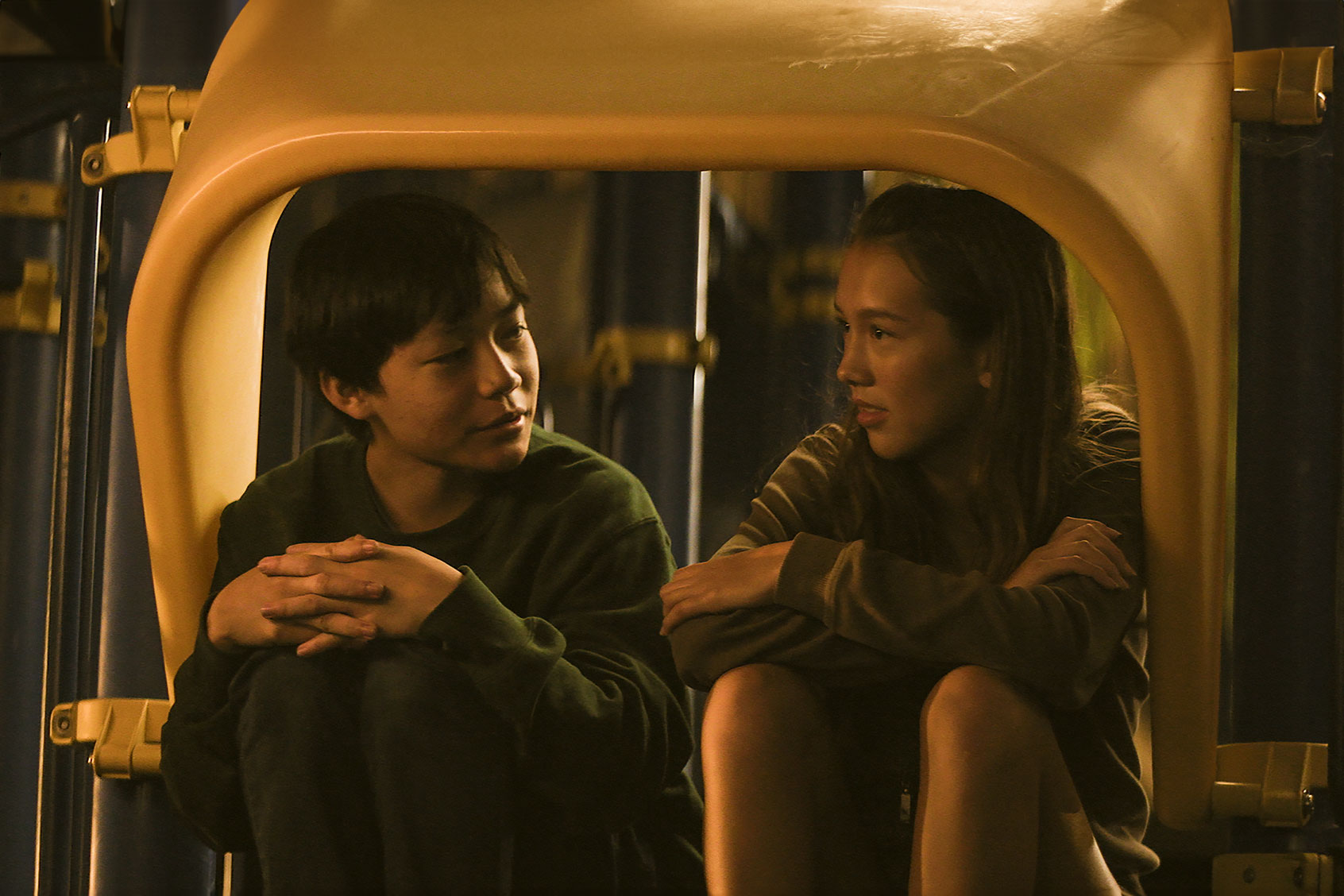“I’m half Asian,” 13-year-old Chris Wang (Izaac Wang) declares to his new skater friends in this summer’s buzzy coming-of-age film "Didi." He’s not; he’s telling an absurd lie that he believes will impress his friends. They start chanting, “Half-Asian Chris! Half-Asian Chris!”
Later, when they meet Chris’ mother and discover both his parents are Taiwanese, they sulk as they leave the room. “This kid is whack,” they mutter to themselves.
Why would Chris make up such a ridiculous, blatant lie? If you’ve never been an Asian American teen in a majority-Asian American enclave in the San Francisco Bay Area, it’s a nuance that may be hard to understand.
Set in 2008, the film is based on "Dìdi" writer-director Sean Wang’s childhood in Fremont. I grew up in San Jose, 40 minutes south of his hometown. I’m two years younger than Wang, so instead of AIM and Myspace, I had G-chat and Facebook.
Both Wang and I attended wealthier, highly ranked public schools in the heart of Silicon Valley. Most of my friends’ parents were engineers who had immigrated to the country during graduate school. Some of them lived separately like Chris’ parents, with the breadwinner father sending money and visiting yearly from South Korea or Taiwan. In Korean, we called them gireogi bubu, or wild goose couples.
The high schools that Wang and I attended existed in similar white and Asian upper-income bubbles. At my school, Asians were the majority racial group. White kids were the second largest, making up over a quarter of the student population.
They were considered the most beautiful people in the school.
The ones we referred to as half-Asian students – specifically, those who were half Asian and half white – sat at the top of the social hierarchy along with the white students. I envied how they seemed to have the best qualities of both worlds — they were smart and in the AP classes with the rest of us Asians, but they were also varsity captains of their sports teams. Their Asian parents, usually more “Westernized” than ours, let them party and stay out late.
Most importantly, I wanted to look like them. Their nose bridges and eye shapes were sharper and more angled than mine — features that my Korean family urged me to attain through plastic surgery. They were considered the most beautiful people in the school. Even my white friend idolized the captain of her volleyball team, a half-Japanese, half-white girl. “I want half-Asian kids one day,” my friend commented frequently. But she never dated Asian guys.
Chris, throughout the movie, pines over a half-Asian girl (Mahaela Park) who is considered more white than she is Asian, both by herself and others around her.
His friends tell him she’ll be into him because she “definitely has yellow fever.” In a particularly cringe-worthy scene during their first park hangout, she tells him he’s “pretty cute . . . for an Asian.” The mostly Asian American theatergoers on opening night all gasped along with me in indignant recognition.
You see Chris take in her words, momentarily speechless at the insult disguised as a compliment. It’s weeks later that Chris first lies to his skater friends about being half Asian.
One of the love interest’s own parents is Asian. She is Asian. How ironic is it that she doesn’t view Asian boys as deserving of her attention? It’s tragic that she, in that moment, dehumanizes not only her family, but herself. She views half of herself as less worthy, less desirable, and erases it completely.
 Didi (Focus Features)
Didi (Focus Features)
I spent most of high school wishing I could be half Asian and half white. I could be friends with these half-Asian kids and take classes with them, but I could never look like them or be desired by them. The popular half-Asian students at our school dated other half-Asian or white students. The racial hierarchy meant that the closer you were to whiteness, the more social capital you had.
So when Chris, self conscious around his older, cooler friends, blurts that he’s half Asian, I recognized my teenage self in him. His lie is one that Asian kids growing up in our specific Bay Area enclave might understand.
My friend group looked a lot like Chris’. I was in speech and debate with my Indian classmates, played field hockey with Sikh kids, and took journalism with East Asian friends. But we didn’t talk much about our identities or differentiate ourselves back then. In recent years, we’ve started to reminisce about our childhoods, comparing and contrasting our cultures and the ethnic lines that divided or united us. We’ve only just started to revisit where our bodies fell on the spectrum of desirability.
The closer you were to whiteness, the more social capital you had.
What happened to our psyches as teenagers and our perceptions of ourselves, when some of us were told that we were less beautiful unless we had whiteness in our blood? Or for others, who were told that they are more worthy because of the whiteness in theirs?
Raising this question with multiracial Asian friends, from childhood and beyond, yields a common answer: all of us have our own grievances with whiteness and the ways it drove greater distances between us. “Full” Asians like myself were always aspiring for a whiteness we could never attain, but the more I talk to my multiracial Asian friends, I realize that they were always reaching for wholeness and falling short as well.
 Didi (Focus Features)Wang, too, seems to be reflecting on his childhood desire to be closer to whiteness. But it’s not from a place of resentment; instead, there’s a curiosity about the racial politics that made us feel trapped in our own bodies. Through Chris, he channels the shame we felt about feeling both too Asian or not Asian enough.
Didi (Focus Features)Wang, too, seems to be reflecting on his childhood desire to be closer to whiteness. But it’s not from a place of resentment; instead, there’s a curiosity about the racial politics that made us feel trapped in our own bodies. Through Chris, he channels the shame we felt about feeling both too Asian or not Asian enough.
After Chris’ mother shows up to debunk his half-Asian lie, after he shoves her out of the room, after he and his crush stop speaking, Chris asks his mother if she’s ashamed of him.
She tells him that she could never be ashamed of him, because he is her dream. It’s here that you see Chris come to terms with what he will never be: he will never be his mother’s friend’s studious son, never be half Asian and never be the white hero his crush imagines.
By capturing the ways we racially fail one another in our adolescence, "Dìdi" allows us to examine how those formative declarations of desire shaped us into who we are now. It helps us understand our childhood conceptions of worth and by extension the way we love ourselves as Asian American adults more deeply.
Read more
about this topic


